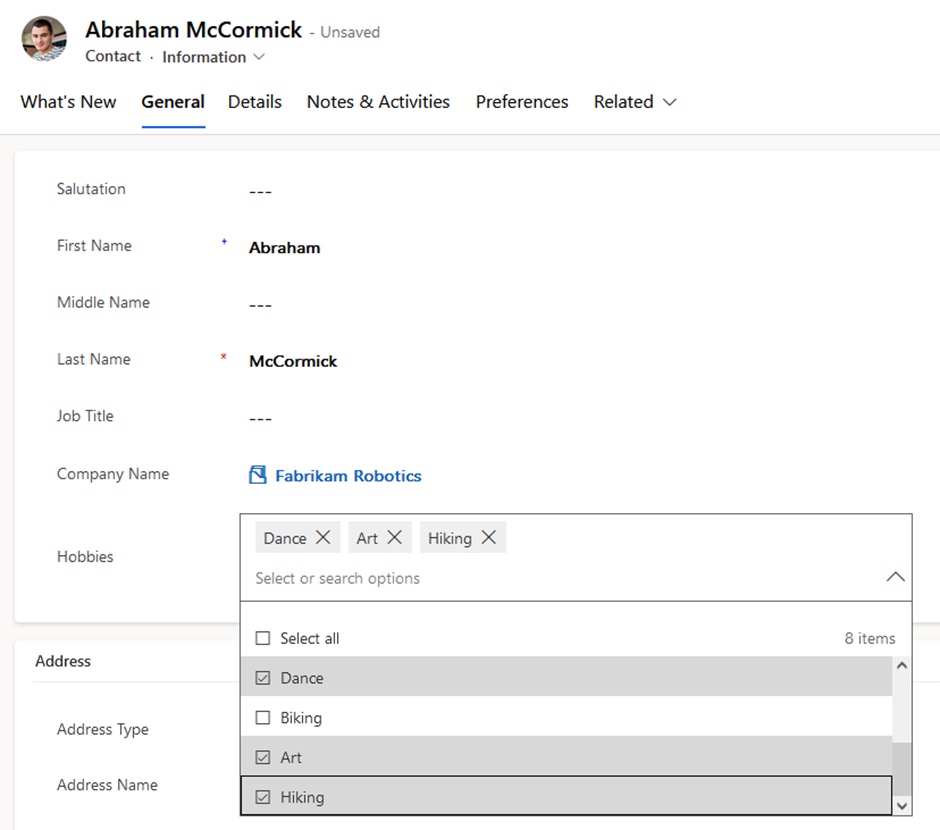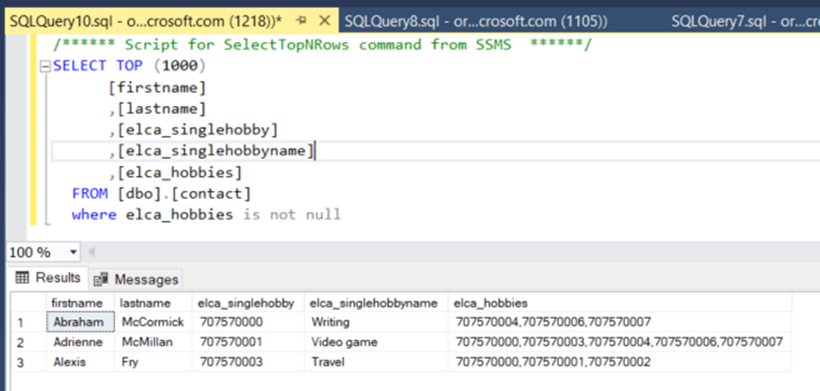Multi-select choices and Dataverse storage
Introduction
You're probably familiar with the "Choice" data type in Power Apps which allows you to select a single item from a drop-down list.
You may also be familiar with multi-select column (called Choices) which allows you to select multiple items in a drop-down list.
While a single Choice column is stored in the underlying Azure SQL database as 2 fields (one for the label and another for the value), what about the storage of a multiple-select column?
You will have the answer in this article.
Summary of Choices column features
When you add a multi-select column, you can specify multiple values that will be available for users to select. When users fill out the form they can select one, multiple, or all the values displayed in a drop-down list.
Multi-select columns can be used with read-only grids, editable grids, and most forms. But they have several limitations and can't be used with:
- Workflows
- Business process flows
- Actions
- Dialogs
- Business rules
- Charts
- Rollup columns or calculated columns.
See below a Choices field in a form:

Choices field with the focus inside:

Choices field with no focus inside. Note that items are separated by a comma.

You can also add a Choices column in a view. Note that items are separated by a semicolon.

Enable TDS endpoint
To be able to see how a multi-select column is stored in the underlying Azure SQL database, you must enable the TDS endpoint (Tabular Data Stream) for your Dataverse environment.
You can read the following articles on TDS:
- https://dynamics-chronicles.com/article/how-access-dynamics-365-online-sql-server-database
- https://dynamics-chronicles.com/article/dynamics-365-dataverse-tds-endpoint-control-access-and-rights
In summary:
Go to admin.powerplatform.microsoft.com and select your environment
Then click on Settings and navigate to Product > Features

Check that TDS endpoint is activated

Storage in Azure SQL database
To illustrate the storage of a multiple-select column I created 2 columns in my Dataverse environment: the 2 columns have the 'Choice' type but one has the multi-select option activated and the other does not.
- Column with logical name = 'elca_singlehobby' : Choice column with the multi-select option disabled
- Column with logical name = 'elca_hobbies' : Choice column with the multi-select option enabled
Then with SQL Server Management Studio (SSMS) we can connect to the database and view the result of the storage of the 2 columns :

As you can see 2 fields are created in the SQL database to store the column 'elca_singlehobby': one field with the type int and another field with the type nvarchar .
And for the multi-select column 'elca_hobbies' only one field of type nvarchar is created in the SQL database.
We can see the values of the fields in the SQL database by running a simple SQL query:

We can see that the muti-select value is the list of values separated by commas.
What about Azure Synapse Link?
And if you try to retrieve a multi-select column with Azure Synapse Link, what will you get?
As you can see below you will get the list of values ... but separated by semicolons.

Published on:
Learn moreRelated posts
Microsoft 365 & Power Platform Community Call – December 4th, 2025 – Screenshot Summary
Call Highlights SharePoint Quicklinks: Primary PnP Website: https://aka.ms/m365pnp Documentation & Guidance SharePoint Dev Videos Issues...
Upcoming Webinar Series: Straight Talk on Power Platform
Forward Forever’s 2026 webinar series, Straight Talk on Power Platform, kicks off in January and we invite you to join us! The series dives in...
Microsoft 365 & Power Platform Call (Microsoft Speakers) – December 2nd, 2025 – Screenshot Summary
Call Highlights SharePoint Quicklinks: Primary PnP Website: https://aka.ms/m365pnp Documentation & Guidance SharePoint Dev Videos Issues...
Personal Power Platform Pipelines explained!
Power Platform inventory to include agents, apps, and workflows from Microsoft 365 Copilot, agent flows, and cloud flows
We’ve expanded Power Platform inventory (Public Preview) to include four new resource types, giving admins a single view of resources ac...
Microsoft 365 & Power Platform Community Call – November 27th, 2025 – Screenshot Summary
Call Highlights SharePoint Quicklinks: Primary PnP Website: https://aka.ms/m365pnp Documentation & Guidance SharePoint Dev Videos Issues...
Setting up Codex with Power Platform MCP Server
Here's how to first Codex extension in VS Code to Power Platform MCP Server. The post Setting up Codex with Power Platform MCP Server appeared...